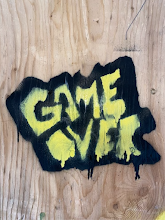
A portion of the time/space spent is within a tightly concentrated space, keeping track of seconds, minutes, time in, time out. Something quite interesting about this duration of time is that, while being intently conscious of seconds and minutes the mind looses track of “watch time”. The idea of loosing track of time by being fully immersed in its minutia is something I need to develop further, maybe video or sound (but that is for another blog).

Another part of this time/space, is where attention is a little more diffused, where something seen in a print in one of the baths stirs a thought, recalls another photograph. This is where the editing begins, and it is not always done in a very deliberate manner; it is simply a question of seeing the prints in the red light and submerged in liquid seems to make certain details, textures or compositions enter into a system of meanings that is absent in “perfect lighting”. It is probably a variation of the old design school trick of studying your compositions upside down in order to see if there are any problems.

Then there is the time/space of imagination. Ideas enter into a free association with the print in the tray. For an instant a multitude of cross-referencing images and sounds fill the imagination, it is the moment of possibility as such it is virtual.




















